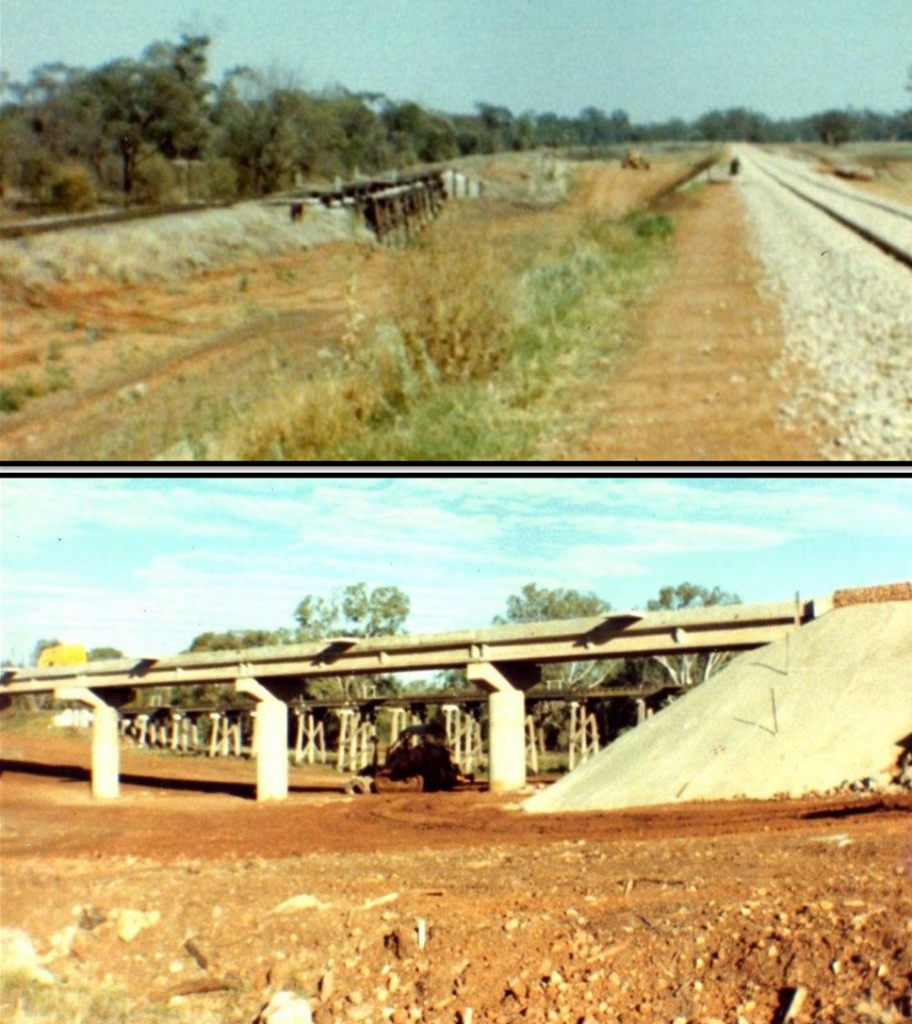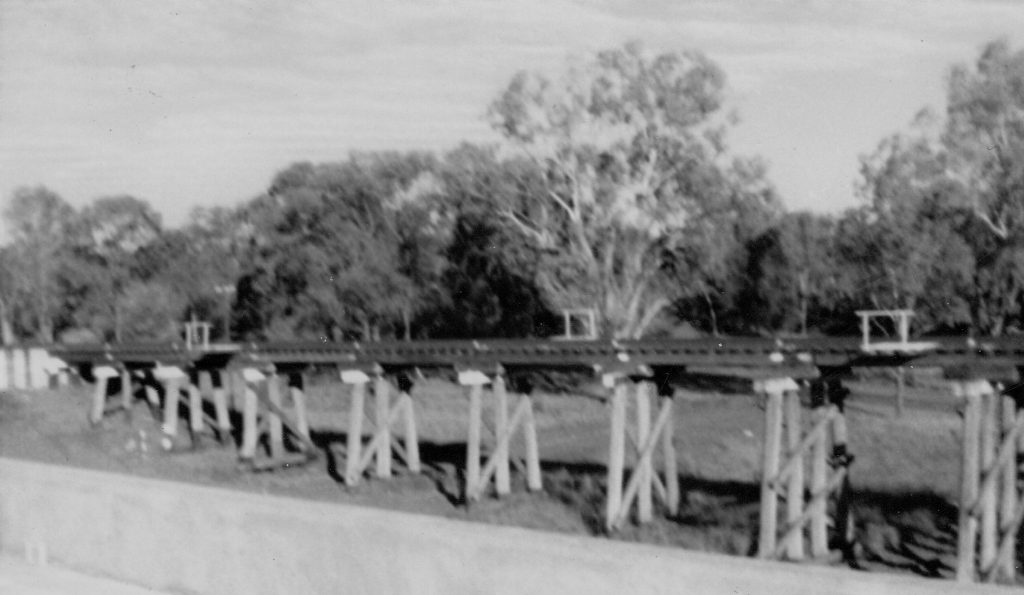Site 7
IN THE EARLY YEARS
We know that there were settlers seeking land in this area as early as 1860. P. F. McDonald and J. McFarlane took up 26,000 acres (10,522ha) of land in 1863 and called it Lurline; with its main water sources being the Nogoa and McKenzie Rivers.
NEW WAGON TRACK TO SPRINGSURE
Comet was referred to as Lurline in the very early days. There were very few wagon tracks through the bush. In 1863, C. Featherstonehaugh blazed a track which branched off the old coach road to Copperfield (Clermont) at Bedford Crossing, north of Blackwater and travelled up the McKenzie River. The track crossed the river at what is known as Riley’s Crossing. The base of the crossing is basalt rock and for many years a vehicle could only cross when the river was not flooding. There is a very substantial bridge across the river now.
The track went through Lurline country crossing the Comet River and on to Minerva and then Springsure. This became a much-travelled track and would have passed through where Comet is today. This track was also referred to as Comet Crossing, and provided a shorter route to Springsure for teamsters.
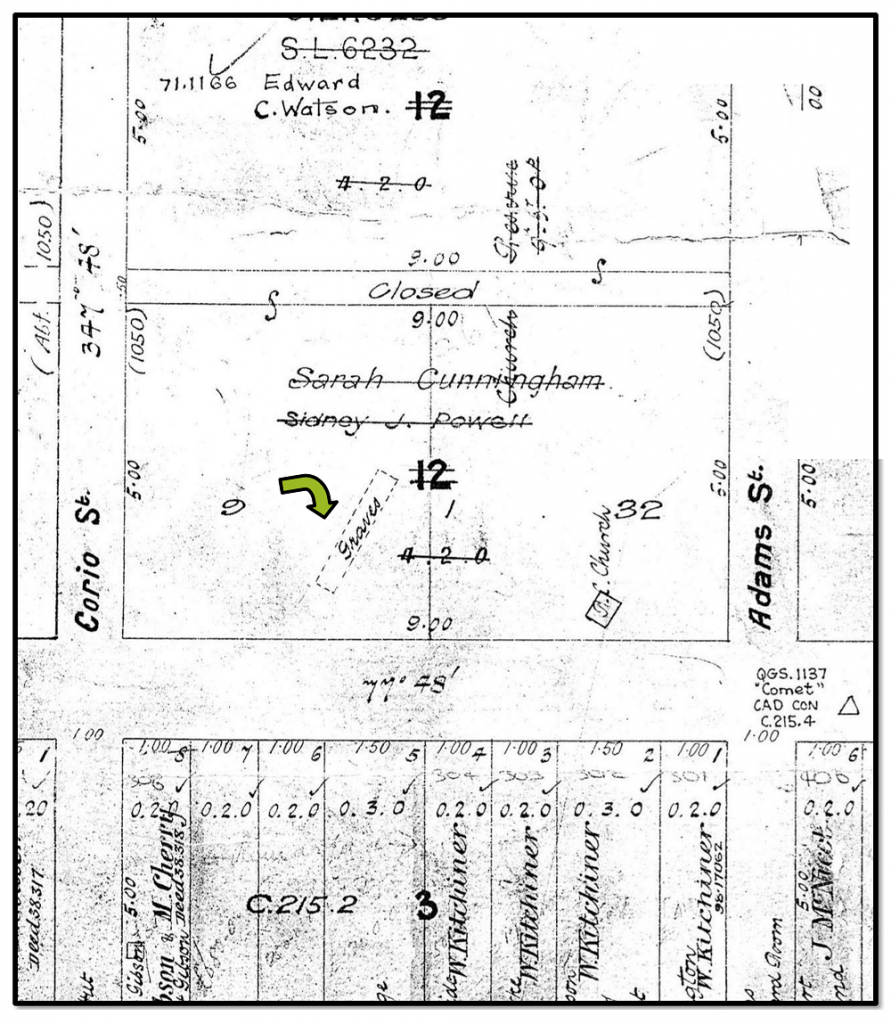
SHAKESPEARE STREET CEMETERY
Comet’s first cemetery in Shakespeare Street was already occupied before the town was surveyed by Willoughby Hannam on 28 June 1878. The survey allowed a block of land for a future cemetery in Tolmie Street. The first mention of this cemetery (No 1) is noted in the Capricornian Newspaper dated 25th May 1878.
Publican George Pago Shakespeare’s hotel backed onto this street; hence the street name.
A TRAGEDY OCCURS
We know that five railway workers died in a terrible accident at Murdering Gully (Comet River Overflow No 1.) on November 6th that year. We are not sure in which cemetery they are buried.
RAILWAY ACCIDENT REPORTED
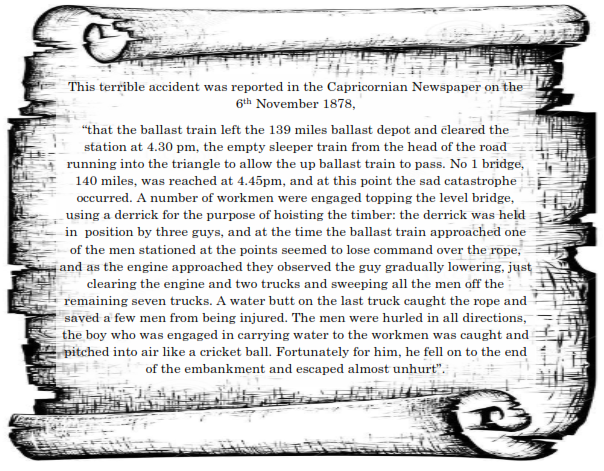
One man died immediately and two others soon afterwards. The injured were taken to the government store and laid on blankets and tarpaulins to ease their pain. Two more died and there were twelve other men injured. Arrangements were made to take the injured to Rockhampton by train with Doctor McNeely, the railway doctor, travelling with them. Another man died on the way and is buried in Blackwater.
BUSINESSES CLOSED FOR THE SOLEMN CEREMONY
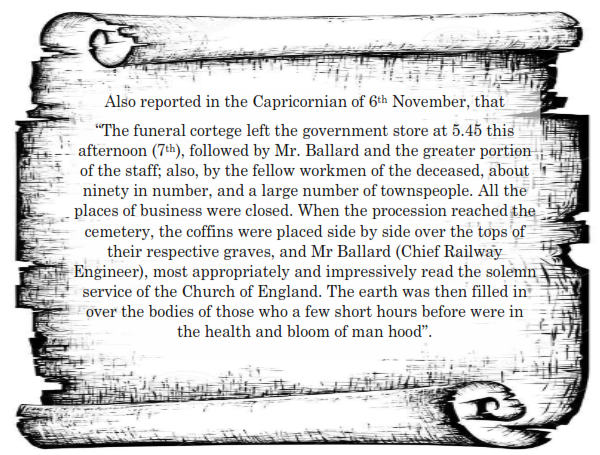
EARLIER SETTLEMENT AT COMETVILLE
An extract from Mr D. R. Dunn’s article, Towards Identification of Graves and Grave sites at Comet/Cometville, Comet Downs Station and Comet River, In Central Q’land (1866-1966) states that “The CQFHA (Central Queensland Family History Association) records show only 19 burials in Comet before 22nd June 1878 which may account for the few headstones remembered by locals in Cemetery No.1. However, according to local knowledge this cemetery (No.1) is believed to have contained approximately 40 to 50 graves”. It would appear that there must have been an early settlement here at that time to account for all the graves in the old cemetery (No 1).
CHURCHES
Marked on the 1878 survey map you can see a Roman Catholic Church, Fr. James Comerford of Springsure was chaplain to the railway workers at Cometville. A Church of England building was completed in August that year but its location in the town is not known. Other denominations were ministered to from time to time by travelling clergymen. These were the United Protestant Church, Primitive Methodist Church and the Presbyterian Church which was ministered to by Rev. W. Meiklejohn of Springsure. The cemetery was closed after the town was surveyed and the new cemetery opened on Tolmie Street.
In much later years, when the new main road was put through Comet, a detour went along Shakespeare Street. I remember that at least one headstone was destroyed. The one remaining headstone was removed to the site of the new cemetery.
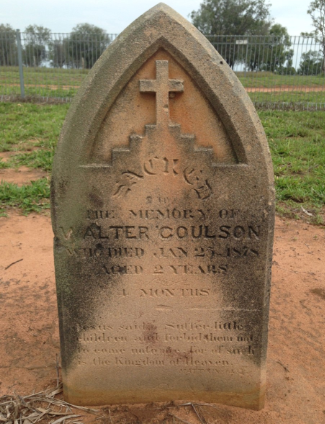
OLD CEMETERY PRESERVED
This block of land on which the old cemetery presides was used as a pony paddock for many years and later cultivated to grow crops. The Emerald Shire Council resurveyed the block into housing allotments on the 28th September 1994. The land was registered with the Department of Lands on the 12th of January 1995. The old cemetery is preserved and houses now occupy the allotments.
A huge basalt rock was donated by Holicum and placed at the old cemetery by Mr Justin Workman.
The Central Highlands Regional Council donated the commemorative plaque which was attached to the basalt rock in April 2013 by Mr. Chris Rawsthorne.
A list of known burials for Cometville, Comet, Comet River and Comet Downs is displayed at the open cemetery established in 1878 in Tolmie Street.
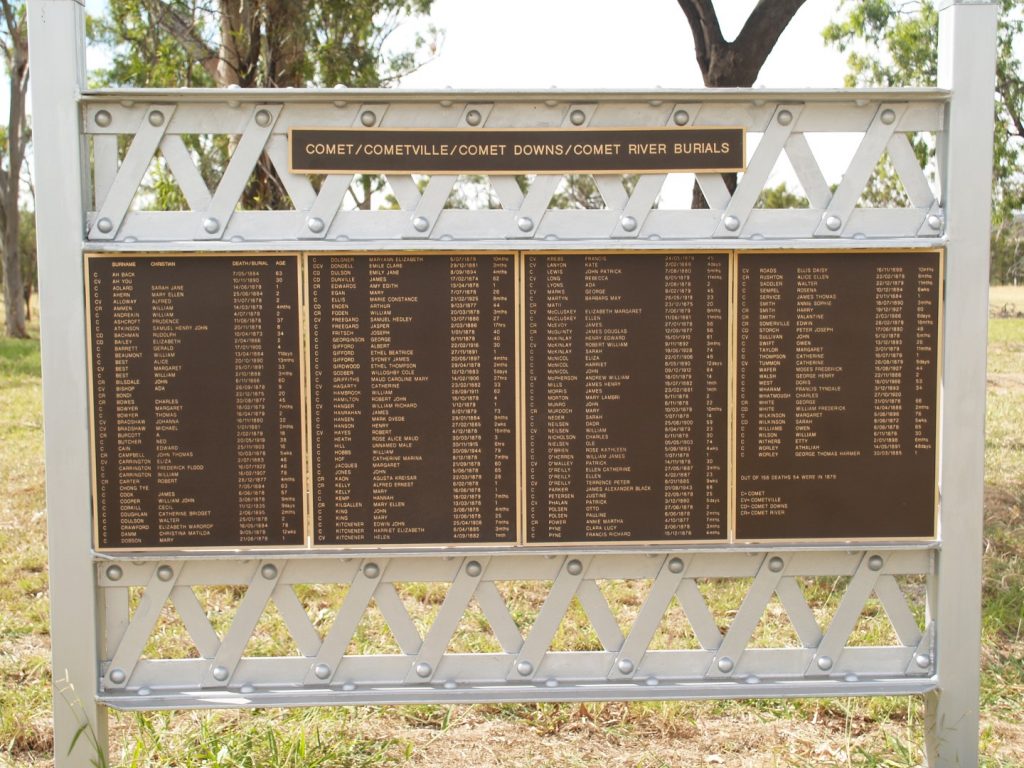
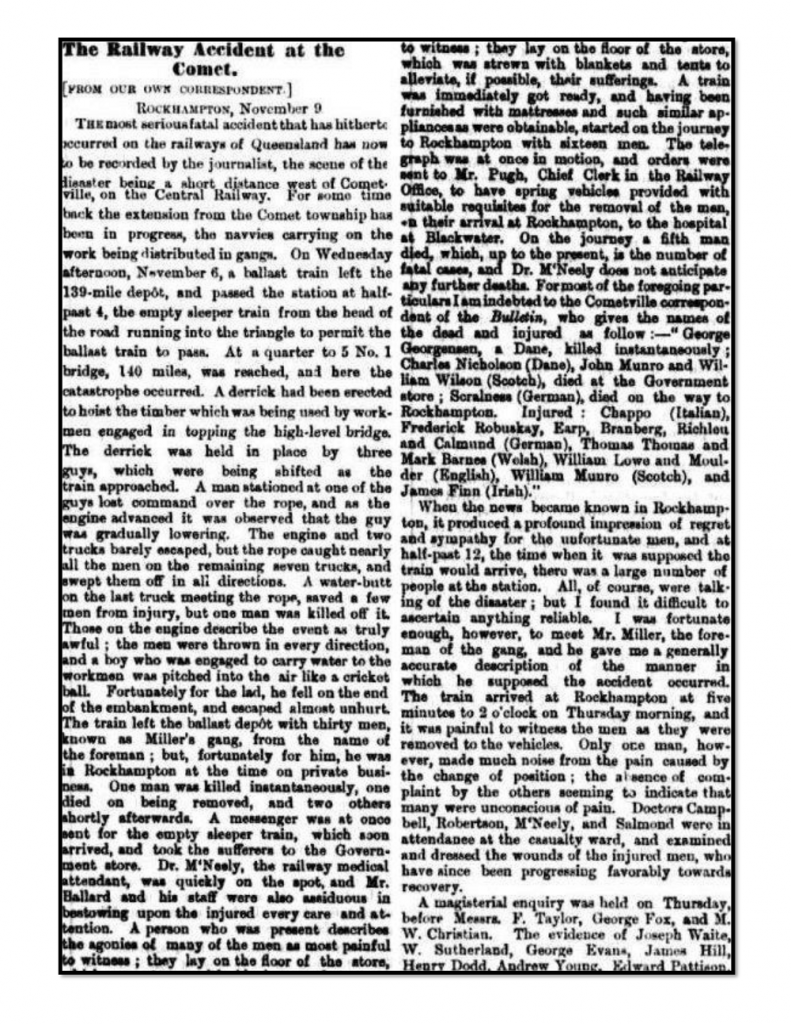
– Compiled by Rosemary McLeod, 2018.
– Photos: National Library of Australia; State Library of Queensland; Rosemary McLeod collection; Trevor Kemp collection; Robyn Morawitz Collection.
– Video: Clementine Morawitz.
– Contact: cometales@gmail.com.au



